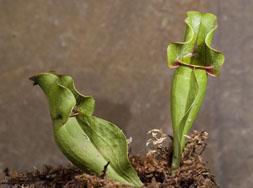

The carnivorous Purple pitcher plant is found throughout North America, from Florida up through Newfoundland. They live in bogs, wetlands, swamps and other regions where the soil is damp, acidic and nutrient deficient. The plant is carnivorous in order to supplement the nutrients missing from the soil. The plant has evolved certain features to help it thrive in these locations; the main feature being the function of the tubular leaf it receives its name from. The keel part of the leaves provides stability and assists in photosynthesis. The keel is larger on plants that live in more nutrient rich soil. If the plant receives enough sun the plant will turn a red purple color.
The pitcher plant absorbs nutrients from small bugs and amphibians that climb into its trap. The plant secretes sweet smelling nectar to entice insects to it. Once inside, sharp downward pointing hairs prevent the insect from escaping. The insect drowns and is slowly dissolved by the plant's digestive enzymes.

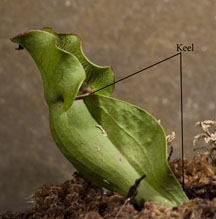
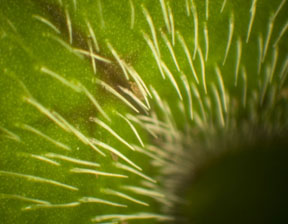

If you have any questions or comments, please feel free to contact me.
The equipment I used to photograph my Pitcher plant in the studio:
The most important thing to keep in mind when shooting your sample is to not let its soil get dry. The plant needs to be moist to live. After every series of shots I took, I would turn off the lights to let the plant cool down. You could turn room lights on if you need too. I was able to reposition the plant and refocus with available room light. I used the putty to prop the container up at different angles so I could maximize the field of view within my focus plane.
My setup for the endoscope shot:
Wolf Endoscope 0° attached to 105mm lens and fiber optics lights
Working with an endoscope is an exciting challenge that I heartily suggest you try. There is not a lot of light and the depth of field is tricky. I set up two additional lights to shine through the plant. Usually one opens the camera’s aperture all the way so the full circle of the endoscope is captured. However with this particular endoscope, it was nearly impossible to focus. I achieved maximum clarity in my images when I set the aperture to f-4.
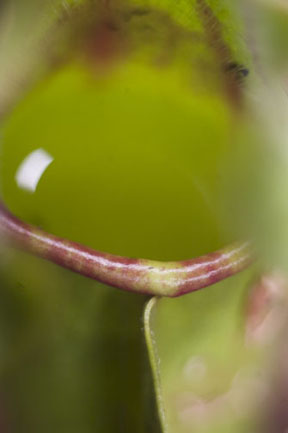
If you would like to learn more about Pitcher plants, please visit The International Carnivorous Plant Society
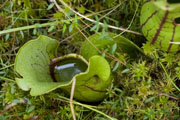 |
Purple Pitcher PlantsSarracenia purpureaby Heather Meers |
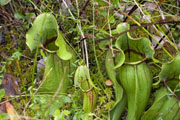 |